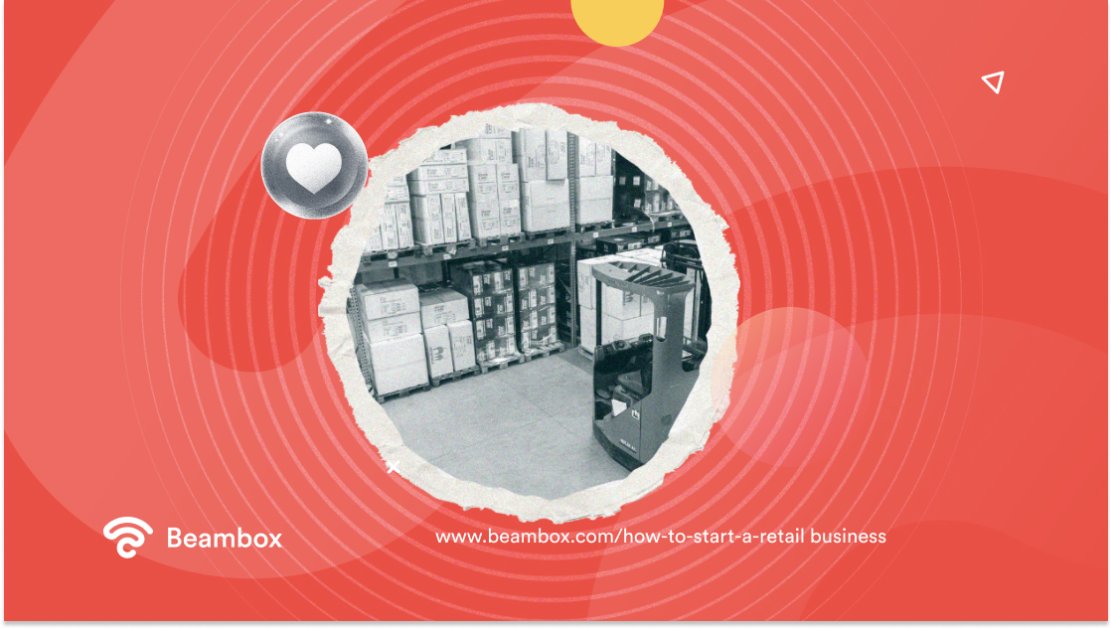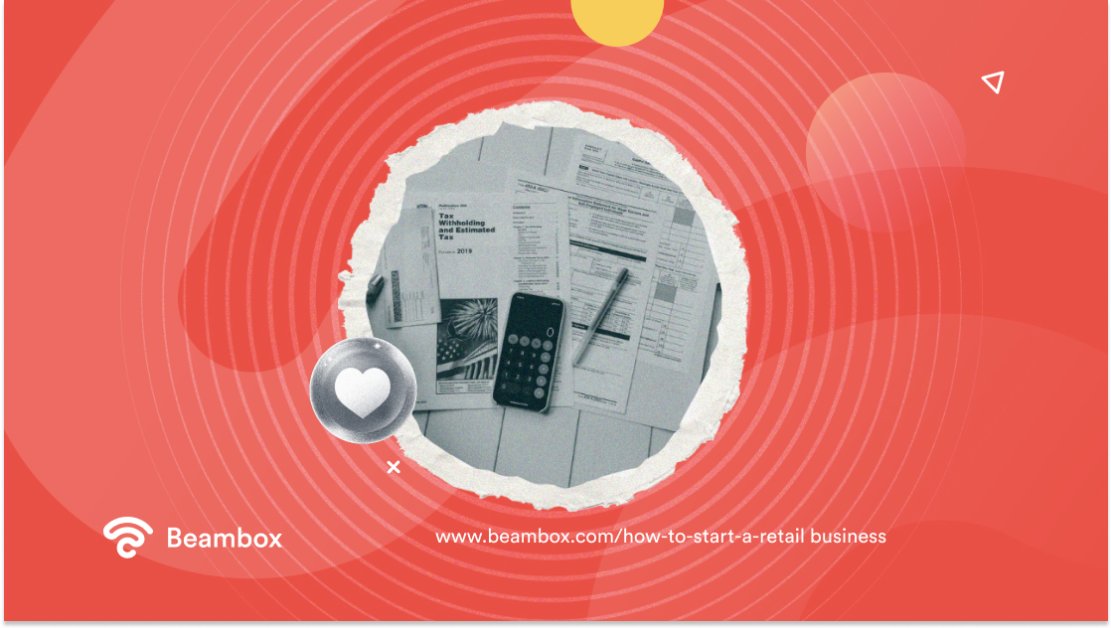A retail business is the base that carries the market. It is a sort of connection between the manufacturer and the consumer. Also, it’s a business that comes with more profit and one that rarely ever goes wrong. Therefore, how to start a retail business is a burning question on many minds.
Making your place in the retail industry can lead to a steady source of income and growth in the business market.
However, the difficulty level of starting this business falls to the heavier side of the scale.
Moreover, the competition in the retail industry may also increase your suffering. But not to worry now, because this article covers all the major do’s you need to start a retail store.

Why Should You Start a Retail Business, And Why Not Something Else?
The answer lies in this section if you are wondering why a retail store is more beneficial than other businesses.
One of the reasons that makes retail so good is the profit margins. If you have the right products, pricing plan, and retail operations, you can earn a lot in this industry.
Moreover, humans crave connection. It’s one of the best ways to sell anything to them. A physical location gives the opportunity to engage the local community and increase your sales. That’s why retail foot traffic is a metric predictive of success.
Some of you may compare retail stores with online ones. Of course, they’re more convenient for consumers due to remote buying.
However, even if customers scroll through the online store, they often feel hesitant to buy from it. It’s hard for them to trust without live interaction with the stakeholders. Hence, many online sellers also prefer a retail front shop.
Additionally, there’s the hassle of shipping mishaps that customers don’t like to deal with. In retail, there’s no such thing since customers take their purchases back with them.
How Much Does It Cost To Start a Retail Business?
When starting, one of the most famous questions is, “How much does it cost to start a retail business?” Finance is the first major step that you should consider before starting a retail store. If math isn’t your strongest area, let’s calculate the total cost in this section.
The truth is the total expense of opening a retail outlet is different for individual situations. The rough estimate is it takes about $50,000 to $100,000 to start retail businesses.
The first thing to consider is the rent of the store. An average rent will cost you around $28.1 per square foot if you start in 2023. And if you’re building your shop, take that up to $50 per square foot.
Once you have a shop, you need the decor to make it presentable to potential customers. From cash counter to paint and visual merchandising, you’re looking at $6000 to $7000 here.
The next thing on the list is bills such as electricity and water. In the US, you may have to pay about $1.5 to $2 per square foot for bills. Additionally, you should consider other amenities like WiFi solutions, a Spotify subscription, etc.
Lastly, consider the costs related to running your business legally. For example, joining a chamber of commerce, doing the legal paperwork, and other activities might impact the capital to start. These costs are different from state to state. However, keep at least $1000 to $1500 for the paper trail and business licenses.
This is a rough estimate of the establishment, but the most important thing is inventory. The rest of the cost in the total budget is for inventory, which you will see in the next section.

How Much Inventory Is Needed To Start a Retail Business?
As mentioned earlier, inventory will claim a large chunk out of your pocket. Calculating this can be very difficult because the manufacturing and wholesale rates are always changing. Therefore, have a rough estimate of how much to spend on inventory in the beginning.
The initial estimate always depends on the type of product you are selling and the size of your business.
Do not overstock your store in the beginning because you first have to analyze the market. However, you must have enough stock never to let the customer go without buying.
Estimating your sales before purchasing products in bulk is a wise step. In this way, you will not compromise your initial cost on unnecessary stocking.
Also, look at your storage space and see if it’s enough to stock up or not. Always consider safety stock while filling up your store. You can use safety stock during a delay in the next supply and an increase in product demand.
Lastly, a balance between initial stocking, selling, and restocking can help you save extra costs while fulfilling customer demand.
In short, there is no set amount for how much inventory is needed to start a retail business. It all depends on individual needs, product demand, and space.
How To Start a Retail Business With No Money?
A good business plan should not fail just because of a lack of funding. Therefore, if you are wondering how to start a retail business with no money, here are some tips.
There is plenty you can do to get capital investment, such as preordering. Preordering is a technique where entrepreneurs promote their potential product before its launch.
It is particularly important if you are starting a single-product retail store. You can promote your product online and get some orders to make up some money. Later, you can buy the product with this money from the manufacturer and start your retail store.
The second option is getting some investment from crowdfunding. Crowdfunding works by getting a small amount of money from a larger group of people. You can also ask for help from friends and family.
The next option is getting business loans. There are multiple options here as well. You can take inventory funding from the organization that offers it.
For a slightly larger investment, you can get loans from business associations, banks, or other available institutes.
Lastly, you can also go for personal loans. You can use this loan for any purpose during your business journey.
Start a Retail Business the Right Way by Following These 7 Steps
While the above details can familiarize you with how to get into the retail business, it’s not enough. You may still need more details to start a shop of your own.
Sometimes, the idea behind the business is amazing, but it still fails. The main reason is not following the right steps when starting.
For example, your cash flows out, or you do not know how to negotiate with the manufacturer. In addition to these, you can face severe problems in letting people know about your business.
If you are worried about failing your business due to any cause, the following seven steps will help you.
Step 1: Leave No Stone Unturned
The first thing you need to do for starting a retail store is understand your target market. A lot of research goes on here. The retail market is overflowing, and if you are new in town, you need to know the possible competition.
Knowing your niche will give you an idea about the needs of the business. However, if you are wondering which niche to choose, the options are many, from bookstores to clothing.
After choosing your niche, explore what kind of issues you can have along the way. The retail market is a difficult one to master. Therefore, preplanning can save you time and energy.
Now that you know what you are getting into, research the marketing strategies and selling tricks your competitors are using.
It is very important to come up with a unique idea for marketing to get past the rivals. Moreover, always evaluate if your niche is profitable or not.
Step 2: Write a Business Plan To Plan Your Business
Once you are confident about the idea your mind has created, put it in a notebook. Writing a business plan is always a good step to making a roadmap.
Writing will give you enough room to evaluate the steps you need to take. It will also help you understand the possible success or failure step by step.
Business plan questions can take many directions. However, the following ones can help you make a comprehensive outline.
- What is your niche?
- What is the target product for selling?
- Is your product in demand?
- What is the growth rate in the market?
- Do you immediately want a permanent front store or a popup shop is enough for now?
- Are you willing to go with an online store as well?
- Do you have enough capital investment, or do you require a loan?
- Now, write about the marketing strategies and how your store will stand out in the market.
- How will you engage your target customers?
- How much staff will you need?
Writing the steps will help you to consider and then reconsider your situation. Also, you can make SMART goals for a more convenient approach to your business goal.

Step 3: Bring the Concept to the Market
Now that you know what business to do, make it recognizable. Yes, coming up with a unique name is very important to brand your products.
Make sure you choose a memorable, brandable, and relevant name. For example, a flashy name like “the player’s zone” won’t work if you’re opening a bookstore. You’ll need a name with calm vibes, such as “dream aisle.”
Now that you have a name, make sure no one else is doing business with the same name.
The next step is creating a business structure. It is crucial since it determines your tax pay and insurance. There are multiple types of legal structures that you can register depending on your jurisdiction. For example, in the USA:
- Sole Proprietorship: It is a type of business structure run by a single person. So, the profits, losses, and debts all belong to the sole owner of the business owner.
- Limited Liability Company: LLC is a business structure that works as a hybrid structure. It may have elements of a corporation, partnership, or sole proprietorship. LLC prevents individuals from the liability of losses and debt.
- Partnership: It is a business agreement between two or more individuals to share a business profit. In this one, every partner has to pay debt and gain profit in equal amounts.
- S Corporation: It is a type of structure in which shareholders get taxable income, losses, and credits. It is the most common in small businesses.
This is just a rough idea of various business entities. For a deeper understanding and to see what is best for you, always consult your business lawyer.
Step 4: Get the Stamp of Approval for Your Retail Business
If you want to start a retail store, never go forward without legal action. Having permits and licenses for business shows the credibility of your establishment.
Licenses are available according to the type of business, location, and items. Therefore, look through the license dictionary of your local state.
However, you might need an Employer Identification Number or EIN for starters. It is a number with nine digits for text account identification.
The other important license is your state’s local license, which gives you the right to do business.
You will also require a certificate of occupancy for the space you are using for a retail store. Moreover, a seller’s permit is also an important license to give you the right to sell your product.
In addition to these, you may also need a reseller’s permit. You can use it to avoid sales tax. It is useful when a retailer purchases an item from the wholesalers.
Your state might also offer something similar, so always ask your legal team about permits and licenses. Lastly, you may also have to pay some fees to get this legal paperwork.
Step 5: Pick the Right Location
Having an idea for a retail business leads you to the next step of opening a store. Obviously, you can not display your product properly without a store. Therefore, make sure you have one.
In case you do not have sufficient funding to build your place, rent one. However, if you want to own a place, you can use the funding and loans you read above.
Always try to position your business in an area with plenty of stores, as it will encourage retail dwell time. This kind of area can help you get customers immediately as they have more potential for catching the public eye.
For example, the Time Squares or Downtowns of your state are the best places to open a store.
Moreover, always have some budget for buying a website domain for online presence. This is not a world of just foot traffic anymore. Online traffic can also improve your sales. Therefore, always make an online impact when launching a retail store.
You can also use platforms like WooCommerce and Shopify to build a side online shop connected to your physical one.
Step 6: Populate Your Store With Goods and Aids
Now that you have a store, see what you need to fill in. Starting with inventory, remember always to stock enough so you do not run out of anything.
Additionally, always try to bargain with the supplier. If you can reduce the cost of the product, you can stock a bit more within the same budget.
You can also use technology to track your stock, such as inventory tracking software. Moreover, POS is great for tracking sales history, transactions, and inventory.
However, if you have a small business, you can always go for making a list of inventory. This list will help you to track the stock.
Now that you have inventory go for the other important stuff, such as furniture. You will need to buy at least two couches for customers. Small decoration pieces will also help to elevate the attraction in the store.
Other things you need are a cash counter, some chairs for the staff and some kitchen supplies.
Now, you will also need some staff to manage the inventory and to sell the products. Always hire as much as you need because it will help you manage the store. Also, your staff must have the right attitude to build customer relationships.
Step 7: Generate Buzz Around Your Retail Store
After setting up your store, you can do the necessary marketing. Come up with a marketing strategy to let people know that you are in the market.
You can use email marketing, social media marketing, and WiFi marketing. These approaches are more suitable for small businesses.
Moreover, always highlight your customer services in a proper way to get good reviews. If you have a good online reputation, your physical store will also get popular in a short time.
Set discount offers in the beginning and promote them through media channels. You can always use guerilla marketing to represent your store in a creative way. However, if you want to keep it simple, focus on local SEO.
Remember to have an extra budget for marketing campaigns from the start. This is very important to estimate the overall cost of starting.

Follow the Process and Stay Committed to Your Goals
Now that you have an understanding of how to start a retail business, you can implement the steps successfully. Start by planning the business and consider key points along the way.
However, don’t forget that success might take time. Stay committed to your goals and endure the inevitable struggles of any business. If you persist, you will have a thriving business.
If you want to gather data about your customers and automate your marketing campaigns, try out Beambox. Beambox’s WiFi marketing platform will help you grow your business with data from your real customers and streamlined marketing initiatives.
Over 12,000 local businesses are using Beambox to grow their revenues. Do you want to be next? Start your free trial now!
Get Started With Free WiFi Marketing
Beambox helps businesses like yours grow with data capture, marketing automation and reputation management.
Sign up for 30 days free